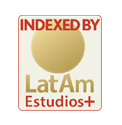Flags in Your Heart
Visual Identity of Estudiantes De La Plata
DOI:
https://doi.org/10.24215/24691879e054Keywords:
Archive, Estudiantes de La Plata, Pennants, Visual Culture, RepresentationAbstract
The following essay aims to delve into the historical archive of the “Estudiantes de La Plata” multi-sports club, in the capital of the province of Buenos Aires. The corpus consists of a selection of pennants from different periods of the club’s history, largely over football. On one hand, the essay addresses the constitution of these objects as a material symbol that the institution preserves as an identity element in its history. On the other hand, the construction of the Estudiantes archive as such. As a theoretical framework, concepts reviewed in the History Theory course (FDA-UNLP), such as visual culture, representation and organic and inorganic archive, will be recovered.References
Chartier, R. (1994). El mundo como representación. En El mundo como representación. Estudios sobre historia cultural (45-61). Gedisa.
Derrida, J. (1997). Mal de archivo. Una impresión freudiana [Fragmentos seleccionados]. Trotta.
Foster, H. (2016). El impulso de archivo. NIMIO. (3). 82-101. http://papelcosido.fba.unlp.edu.ar/ojs/index.php/nimio/article/view/351/586
Giunta, A. (2010). Archivos. Políticas del conocimiento en el arte de América Latina. ERRATA. Revista de Artes Visuales, (1), 20-38. https://issuu.com/revistaerrata/docs/revista_de_artes_visuales_errata_1_issuu
Keen, M. (1984). La caballería. Heráldica y heraldos (168-191). Barcelona: Ariel
Marchán Fiz, S. (2005). Las Artes ante la Cultura Visual. Notas para una genealogía en la penumbra. En JL. Brea (ed.), Estudios Visuales. La epistemología de la visualidad en la era de la globalización (75-90). Akal.
Marchesi, M. y Szir, S. (2011). Intervenciones estratégicas para una redefinición disciplinar. Travesías de la imagen I. Historias de las Artes Visuales en La Argentina (pp. 29-37). EDUNTREF.
Marí I Brull, G. (2006). Heráldica medieval: una creación cultural para una sociedad laica. Mirabilia, Revista Eletrônica de História Antiga e Medieval (6) (pp. 130-133).
Museo Estudiantes de La Plata. (16 de noviembre de 2022). UNA JORNADA A TODA HISTORIA EN ‘LA NOCHE DE LOS MUSEOS’. https://www.facebook.com/museoestudiantes/posts/176146848418465
Pollock, G. (2013). Intervenciones feministas en las historias del arte. Una introducción. En Visión y diferencia. Feminismo, feminidad e historias del arte (19-50). Fiordo.
Sitio oficial Club Estudiantes de La Plata (noviembre de 2022). Sede social, Historia, Museo. https://estudiantesdelaplata.com
Tello, A. (2018). Una archivología (im) posible. Sobre la noción de archivo en el pensamiento filosófico. Síntesis Revista de Filosofía (1), 43-65.
Downloads
Published
How to Cite
Issue
Section
License

This work is licensed under a Creative Commons Attribution-NonCommercial-ShareAlike 4.0 International License.
The acceptance of the manuscript by the magazine means the non-exclusive cession of the property rights of the authors in favour of the editor, who allows the reuse, after publication (post print), under a license Attribution-NonCommercial-NoDerivatives 4.0 International.
According to these terms, the material can be copied and redistributed by any means or in any format as long as a) the author and original source of the publication are quoted (magazine and URL of the work), access to the license is provided and whether changes have been made is mentioned; and b) the material is not used for commercial purposes.
The cession of non-exclusive rights means that after the publication (post print) in Nimio the authors can publish their work in any language, means and format; in such cases it must be mentioned that the material was originally published in this magazine. Such cession also means the authorization of the authors for the work to be collected by SEDICI, the institutional archive of the Universidad Nacional de La Plata, and to be spread in the databases that the editorial team considers appropriate to increase the visibility of the publication and its authors.
Moreover, the magazine encourages the authors to deposit their productions in other institutional and thematic archives under the principle that offering the society the scientific and academic production without any restrictions contributes to a greater exchange of the global knowledge.

























